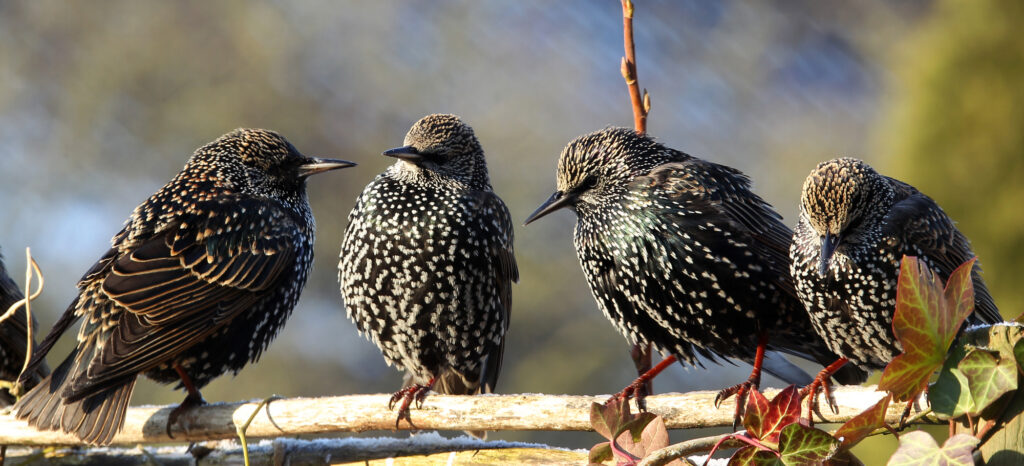Fascinating to some and considered a pest by others, starlings are birds that polarize opinion. While starlings can look beautiful to some and create a truly wonderful wildlife spectacle when they gather together in large numbers and sweep across the skies in astonishing murmurations, for others, they can be a horticultural or agricultural pest.
But whether or not this non-native bird is considered a welcome visitor in North America, it can be interesting to compare it to some native species.
By looking at starlings more closely and comparing them with native species that look like them, we can learn more about identifying the different birds we might encounter in our areas.
What are Starlings?
Starlings are medium-sized passerine birds in the Sturnidae bird family. The European starling is native to Europe but has now spread around the globe. Since it was introduced to North America, it has become an extremely common species.
Since starlings were introduced in the 19th century, their population is estimated to have grown to 150 million, occupying an area extending from southern Canada and Alaska to Central America.
How to Identify a Starling
European Starling
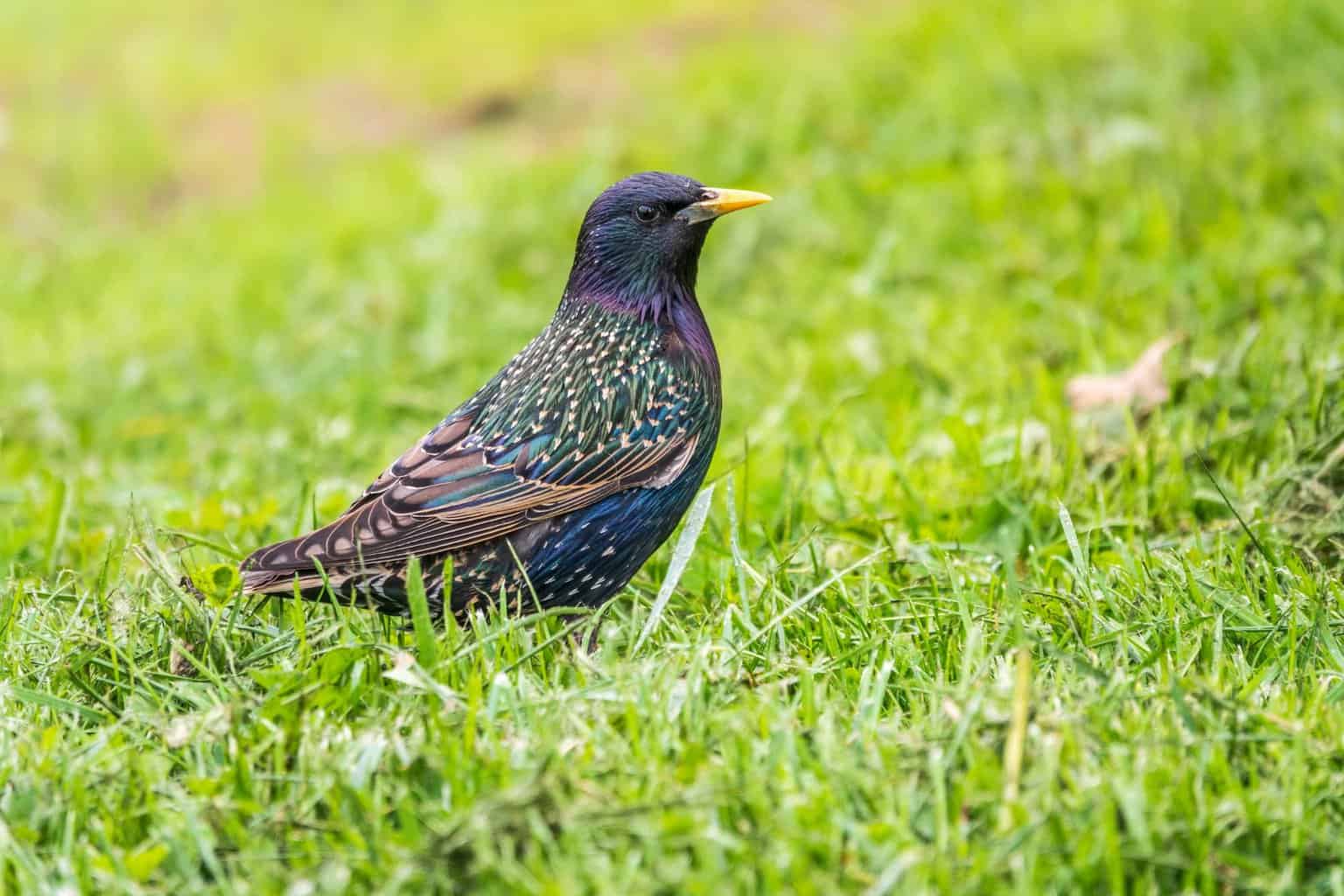
- Scientific Name: Sturnus vulgaris
- Length: 7.9-9.1 inches (20-23 centimeters)
- Weight: 2.1-3.4 ounces (60-96 grams)
- Wingspan: 12.2-15.8 inches (31-40 centimeters)
Though European starlings may look black from a distance, they are actually very colorful, with purple, blue, and green tones in their iridescent feathers. They often gather in very large flocks.
Breeding adults of this species are dark overall and look black from a distance, but they have the purplish-green iridescence mentioned above and yellow bills. They are chunky and around the same size as blackbirds. But they have short tails, short and pointed wings in flight, and a long, slender bill.
Non-breeding adults and immature starlings have spots or speckles on their backs and underparts. Their bills are dark during the winter but take on a yellow hue as the breeding season approaches. Juveniles are a pale brown over most of their plumage, with some white and black as adult plumage grows in.
Birds That Look Like Starlings
European starlings may sometimes be confused with a number of New World blackbirds, which belong to the Icteridae bird family.
What is the Difference Between Blackbirds and Starlings?
Starlings are non-native, while many of the birds that are frequently confused with them due to some similarities in appearance or habit are native North American species.
As mentioned above, the European starling is in the Sturnidae family – while it is a passerine bird, like all New World Blackbirds (Icteridae) in the order Passeriformes, it is in a different family and so, therefore, is not closely related.
Interestingly, though European starlings can often travel in large, mixed groups alongside native new world blackbird species and in groups with grackles and blackbirds, they may sometimes blend in and be challenging to distinguish from a distance.
Here are some of the blackbird species commonly confused with starlings, with some tips about how you can tell these species apart:
Brewer’s Blackbird
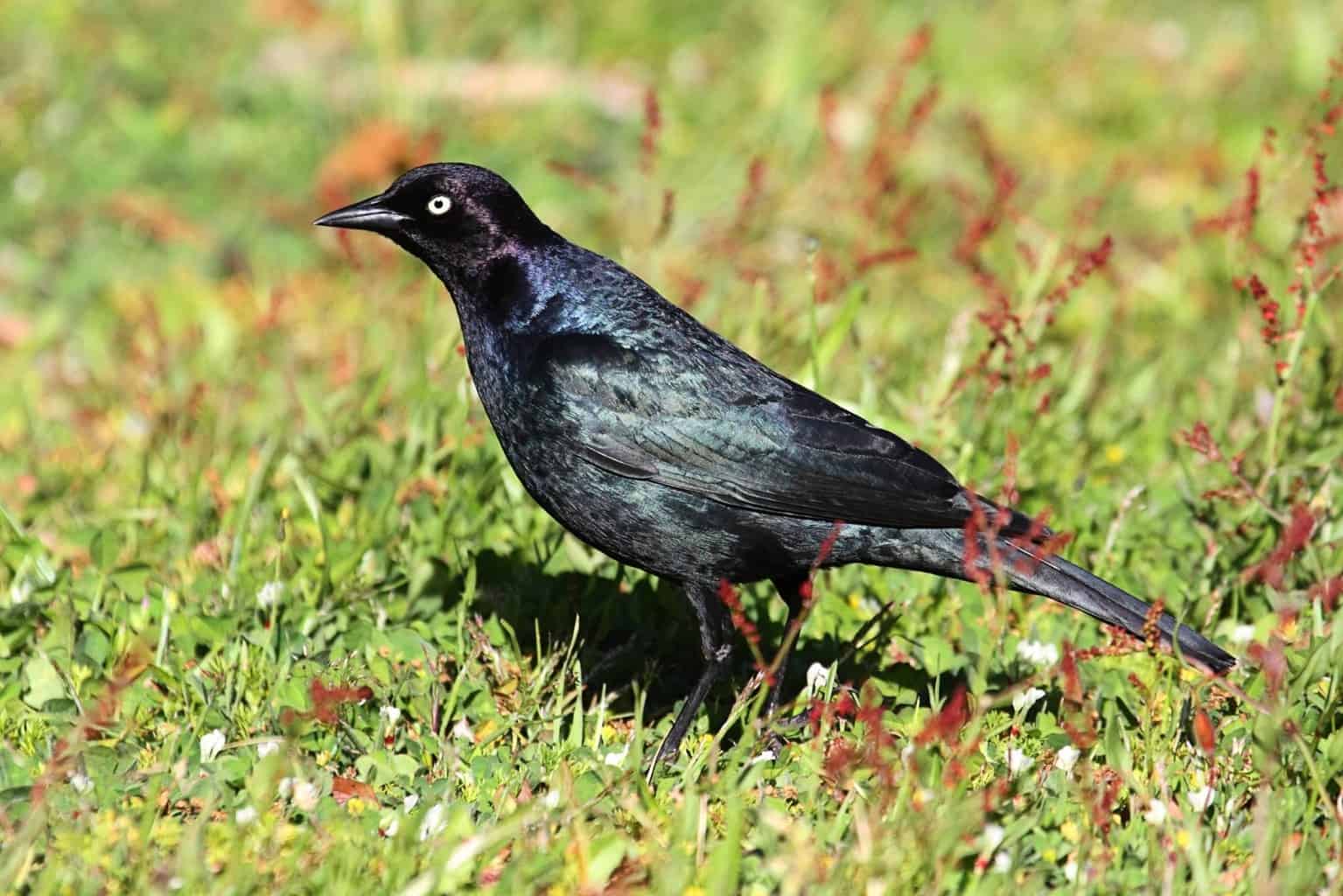
- Scientific Name: Euphagus cyanocephalus
- Length: 7.9 -9.8 inches (20-25 centimeters)
- Weight: 1.8 -3.0 ounces (50-86 grams)
- Wingspan: 14.6 inches (37 centimeters)
The males are black with purplish and green sheens to the head and body. The females are brown.
Brewer’s blackbird’s bill is thicker and darker than that of the breeding European starling, which has a yellow, thin, and pointed bill. They also lack the intricate iridescent patterns present on the starling.
The brown females look rather similar to the juvenile starling with their brown coloration. But look out for the thicker bills and longer tails of the female Brewer’s blackbirds, which set them apart.
Brown-Headed Cowbird
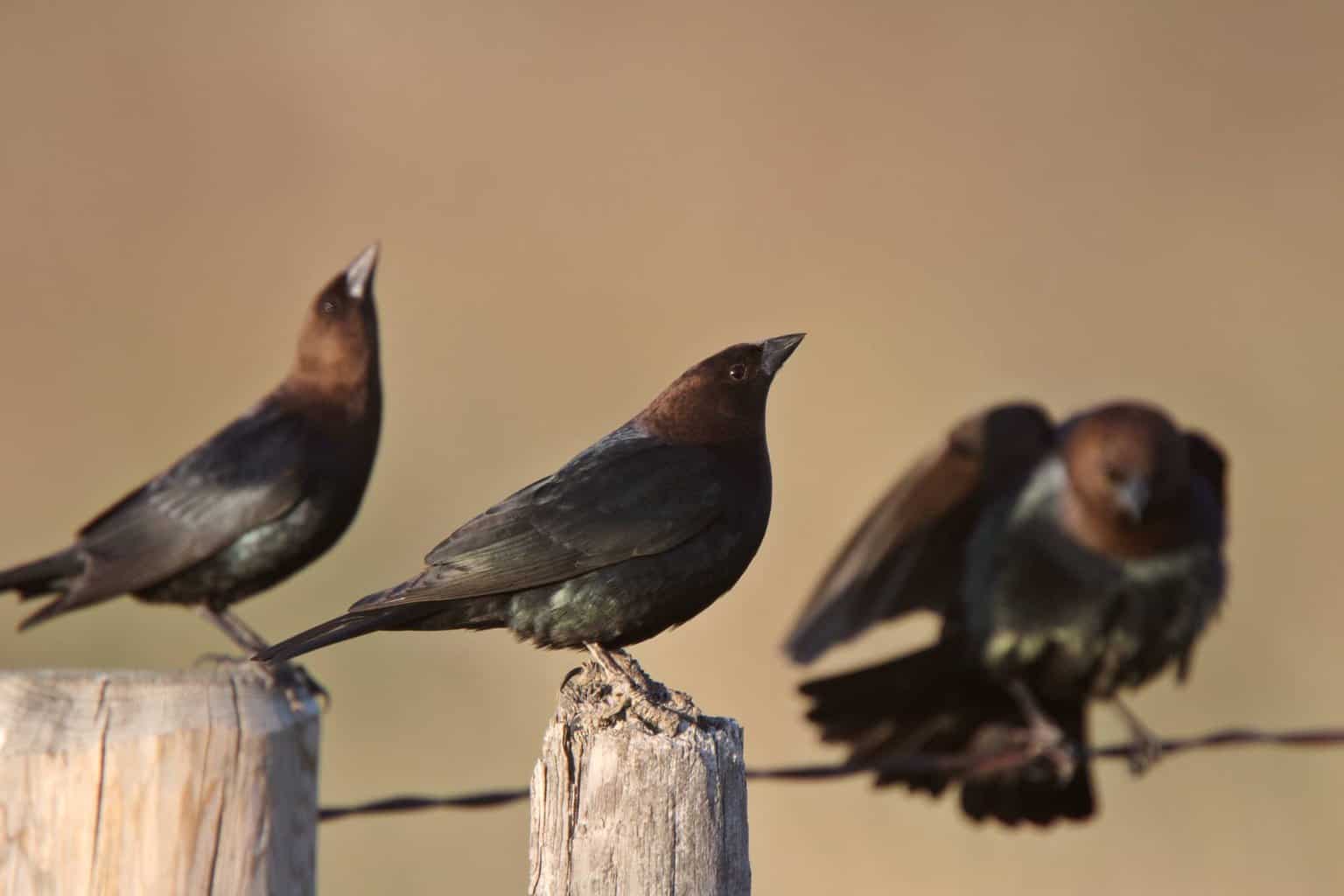
- Scientific Name: Molothrus ater
- Length: 76.3-8.7 inches (19-22 centimeters)
- Weight: 1.3-1.8 ounces (42-50 grams)
- Wingspan: 14.2 inches (36 centimeters)
The males have black bodies and brown heads, while the females are lighter, streaky, and brownish-gray all over.
Male Brown-headed cowbirds might sometimes be mistaken for a brownish juvenile starling growing some adult blacker plumage. But note that cowbirds have a thick and cone-shaped bill, which sets them apart from the European starling with its thin and pointed one.
Female Brown-headed cowbirds look very similar to juvenile starlings, which don’t yet have adult plumage. But again, a key way to tell them apart is by their bills. The female Brown-headed cowbird has a wide and cone-shaped bill, which is a key distinguishing characteristic.
Common Grackle
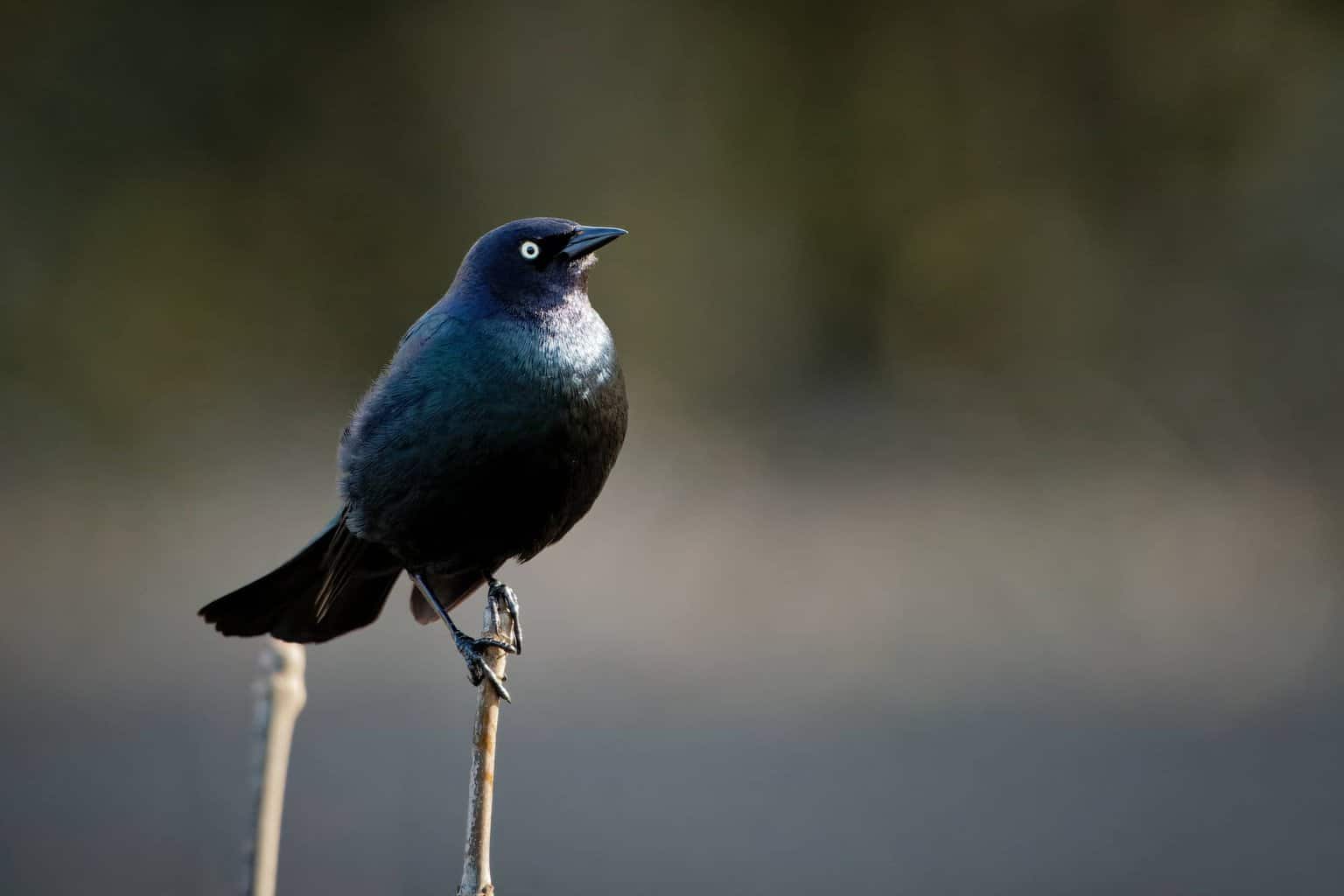
- Scientific Name: Quiscalus quiscula
- Length: 11.0-13.4 inches (28-34 centimeters)
- Weight: 2.6-5.0 ounces (74-142 grams)
- Wingspan: 14.2-18.1 inches (36-46 centimeters)
A little taller and with longer tails than typical blackbirds, grackles have long tails, and their feathers have a glossy sheen. The males are slightly shinier than the females.
Common grackles are larger than European starlings and have longer tails. They also have dark legs, dark bills, and yellow eyes, while starlings have pinkish-hued legs, yellow bills (in breeding individuals), and dark eyes.
Red-Winged Blackbird
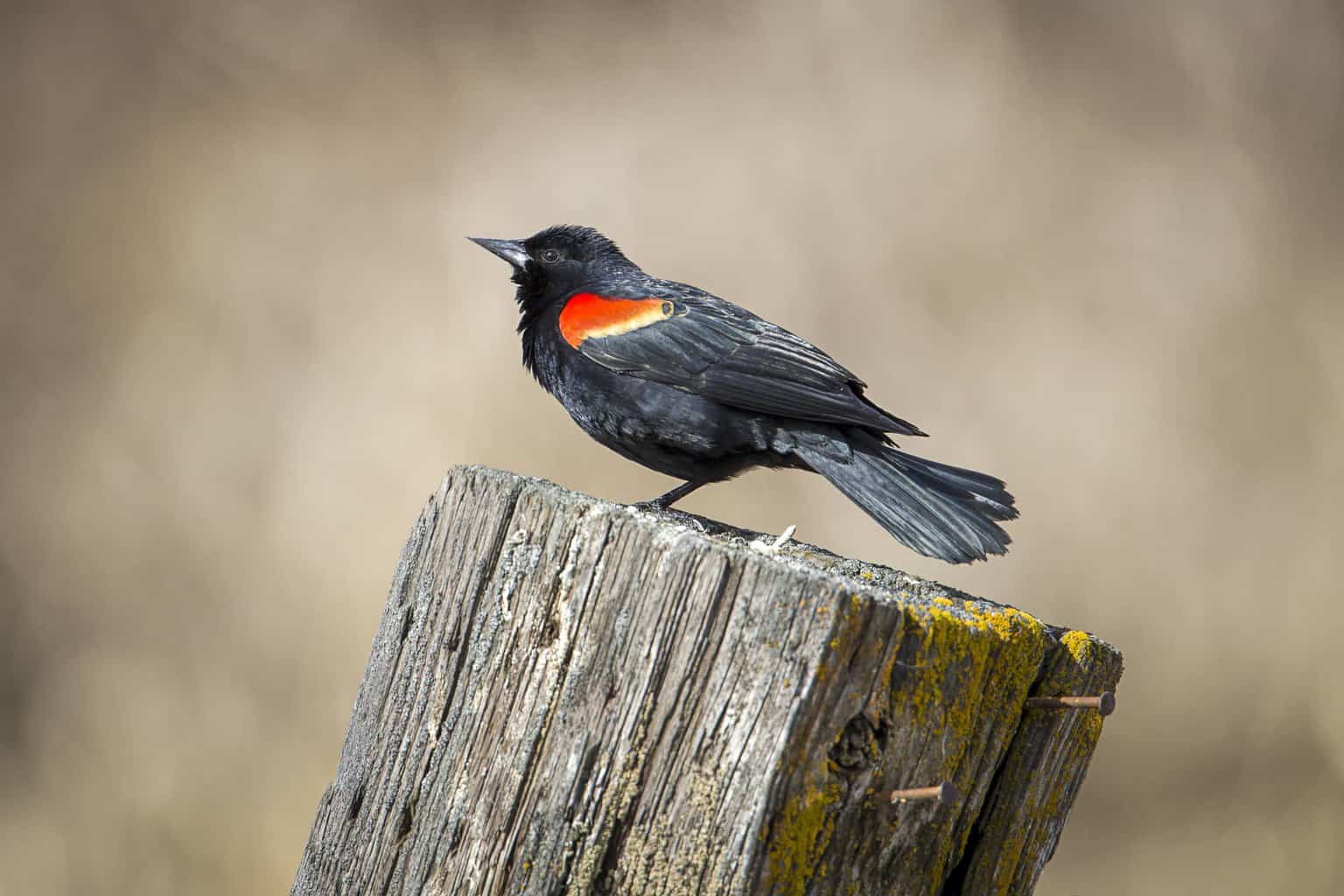
- Scientific Name: Agelaius phoeniceus
- Length: 6.7-9.1 inches (17-23 centimeters)
- Weight: 1.1-2.7 ounces (32-77 grams)
- Wingspan: 12.2-15.8 inches (31-40 centimeters)
The males are all black except for the reddish-orange patches on their wings. The females, on the other hand, are dull brown.
The female Red-winged blackbird can be difficult to distinguish from juvenile European starlings. But, while both are brown in overall color, the female Red-winged blackbird is more heavily streaked with darker brown patterns and hues than the more dun-colored juvenile starlings. And you won’t see any of the black or white spotting that creeps in on European starlings as they mature.
Rusty Blackbird

- Scientific Name: Euphagus carolinus
- Length: 8.3-9.8 inches (21-25 centimeters)
- Weight: 1.7-2.8 ounces (47-80 grams)
- Wingspan: 14.6 inches (37 centimeters)
In winter, the males have a rusty appearance, having shed their glossy black summer plumage. The females are gray-brown, streaky, with dark eye rings and a lighter streak above.
Rusty blackbirds are larger and stouter than European starlings. And another key thing to look out for is that these birds have yellow eyes, which contrasts with the dark eyes of the European starling. The non-breeding males in their russet, mottled brown plumage don’t have any of the iridescence of the European starling.
Of course, several other black birds might be mistaken for starlings at a distance. But up close, the starling is usually fairly easily identified.

